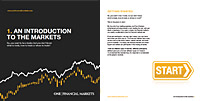

Oil at month high; U.S. rate hike fears cooled somewhat by soft jobs report
Investing.com -- Oil bulls are finally getting a break on rate hike concerns after a softer-than-expected U.S. jobs report for June suggested some tempering in the Fed’s hawkishness when the central bank’s policy-makers sit for their next rate review in three weeks.
Also helping sentiment was a weekly report on U.S. oil inventories, published Thursday, that showed across-the-board draws for crude and fuel.
U.S. crude hit a one-month high with New York-based WTI, or West Texas Intermediate, reaching nearly $74 the first time since June 5 with an intraday high of $73.91 per barrel. The U.S. crude benchmark settled up $2.06, or 2.9%, at $73.86.
London-based Brent settled up $1.95, or 2.6%, at $78.47 after a one-month high of $78.53.
For the week, WTI was up 4.6%, adding to the previous week’s 2.1% gain. Brent rose 4.8% on the week after the prior week’s 1.4% rise.
“Could we finally be about to see a breakout in oil prices after two months of consolidation?” Craig Erlam, analyst at online trading platform OANDA, asked in a market commentary, adding: “The rally over the last week or so from the range lows has been quite strong and backed by momentum.”
Oil rallied after the Labor Department reported that U.S. employers added 209,000 nonfarm payrolls in June, a number that came in below economists’ estimates for the first time in 16 months, signaling progress in the Federal Reserve’s bid to fight inflation with higher interest rates.
Wall Street’s economists had expected a jobs growth of 225,000 for last month, from a previously published 339,000 for May which the Labor Department revised down to 306,000 on Friday.
The unemployment rate remained unchanged in June at 3.6% while wages expanded by 0.4% from a 0.3% growth in May. Fed officials have said employment and wage growth have to cool significantly to effectively restrain the worst inflation the United States has encountered in four decades.
Inflation still hot; One jobs report doesn’t mean much, says Fed’s Goolsbee
Inflation, as measured by the Consumer Price Index, or CPI, grew 4% year-on-year in May, slowing from a 40-year high of 9.1% in June 2022.
The Fed’s tolerance for inflation is, however, just 2% per annum. Since March 2022, the central bank has raised interest rates by 10 times, adding a total of 5% to the previous pandemic-era rate of 0.25%. While the Fed paused its rate hike cycle last month, there is speculation it could resume that when it meets on July 26 for its next rates review.
To be sure, Chicago Fed President Austan Goolsbee told CNBC on Friday that one should “never make too much out of any one month of jobs numbers”.
“It is clear that the job market is still very strong but cooling,” he added. “I haven't seen anything that says 1 or 2 more rate hikes this year is wrong.”
In U.S. oil inventory data released on Thursday, crude stockpiles fell for a third week in a row while inventories of gasoline and distillates shrank too, the Energy Information Administration, or EIA, said in its Weekly Petroleum Status Report.
Begin trading today! Create an account by completing our form
Privacy Notice
At One Financial Markets we are committed to safeguarding your privacy.
Please see our Privacy Policy for details about what information is collected from you and why it is collected. We do not sell your information or use it other than as described in the Policy.
Please note that it is in our legitimate business interest to send you certain marketing emails from time to time. However, if you would prefer not to receive these you can opt-out by ticking the box below.
Alternatively, you can use the unsubscribe link at the bottom of the Demo account confirmation email or any subsequent emails we send.
By completing the form and downloading the platform you agree with the use of your personal information as detailed in the Policy.






